When You’ve Got More Babies Than Hands: How to Stay Sane with Multiple Litters
It happens to all of us eventually—your queens sync up like they’re running a feline fertility cult and boom: it’s raining kittens. You’ve got more fluffballs than you do hands, sleep, or fridge space for raw meat. If you’re feeling overwhelmed, exhausted, and slightly feral yourself, you’re not alone.
Here’s how to survive (and even thrive) when you’ve got multiple litters on the ground at once.
It’s not easy managing multiple litters of kittens in once space. Space for your cattery is the most valuable asset that you can have. If you’re working your cattery in your home, you may find it challenging if you have more than one litter of kittens on the ground at the same time.
This podcast episode will explore some options if you’re thinking about having two litters, and struggling with the idea of managing your space. There are different options, so just enjoy the show episode and do what works the best for you!
Structure Your Day (and Night) Like a Kitten-Wrangling CEO
You can’t just “wing it” when you’re caring for 10, 15, even 20+ kittens at once. You need structure. And you need it yesterday.
Here’s what a real-world, chaos-tamed daily routine can look like:
Morning (7:00–9:00 AM)
- Quick check-in on all litters: Is everyone alive, warm, and accounted for?
- Feed nursing queens, clean litter boxes, refresh water.
- Weigh and chart kittens (preferably before they eat).
- Bottle feed or assist if needed.
- Spot-clean bedding or fully replace if messy.
Midday (12:00–2:00 PM)
- Second weigh-in for the fragile ones.
- Supplementary feeding if needed.
- Stimulation/toilet for pre-weaners.
- Short socialization session or cuddles (if your hands allow).
Evening (5:00–7:00 PM)
- Clean up nursery rooms. Change pads, rotate toys.
- Feedings (queens and kittens).
- Another round of weights and any needed interventions.
- Evening snuggles or supervised play.
Night (10:00 PM–12:00 AM)
- Final check before bed. Last bottle if needed.
- Heat pad check.
- Write down any out-of-the-norm behaviors.
Middle of the night?
If you’re bottle feeding neonates or helping a queen who’s struggling, set alarms. Use a dim red light to avoid waking the whole house. And yes, naps count as sleep when you’re a breeder.
Systems That Track EVERYTHING (Without Losing Your Mind)
When you’ve got multiple litters at different stages, tracking becomes mission critical. You think you’ll remember which kitten gained 10 grams and who had the yellow poop—but by day five, it’s a blur of fur.
What to Track (Bare Minimum):
- Daily weights
- Feeding notes (especially for bottle babies)
- Developmental milestones (eyes open, walking, weaning, using litter box)
- Medical (deworming dates, vaccines, meds)
Best Tracking Systems:
- Whiteboards in the nursery: Great for quick glances and updates during feedings.
- Digital spreadsheets: Use Google Sheets so you can access them on your phone while covered in kitten pee.
- Apps: Breeder-specific apps or even human baby tracking apps (like Huckleberry or BabyTracker) can be repurposed.
- Color-coded collars or Sharpie dots: For visually telling kittens apart before microchipping.
Pro Tip: Assign each litter a code name (e.g., “Z-Litter” or “Disney Litter”) so notes stay organized and prevent cross-tracking errors.
Co-Parenting Litters: When Queens Team Up
Yes, it’s a thing. And yes, it can work beautifully—if you do it right.
Some queens (especially related ones) will naturally co-parent. They’ll nurse each other’s babies, take shifts, and even pile up in the same nest. Others? Total Mean Girls. They’ll fight or reject another queen’s kittens.
When to Allow Co-Parenting:
- Queens are bonded and show no aggression.
- Litters are close in age and size.
- You supervise the intro and are ready to intervene.
When to Avoid:
- One queen has history of rejecting or harming kittens.
- Kittens vary too much in age (older kittens may hog nipples).
- You need to monitor one litter closely due to illness or concern.
If it works, co-parenting can lighten your load a lot. But don’t force it. It’s not worth losing kittens over.
How to Protect Your Sanity (and Still Be a Functional Human)
Let’s be honest—this life can wreck you if you don’t set boundaries.
Here’s what seasoned breeders do to protect their peace:
- Schedule breaks. Even a 15-minute walk around the block can reset your brain.
- Eat real meals. Not just the leftover kitten formula you drank on accident.
- Ask for help. If you have a partner, friend, or older child—delegate. Feeding, cleaning, logging… something.
- Set limits with buyers. You don’t owe a response at 11 PM just because someone saw your TikTok. Create office hours.
- Protect your sleep. Nap when the kittens nap. It’s not just for new moms—it’s for you too.
And remember: you chose this life. It’s messy and chaotic and so damn rewarding. You’re building legacies one tiny heartbeat at a time.
Queens that Co-Parent
If you’re fortunate, you may have two females that will share their space (and their kittens) with one another. This is also known as “co-parenting” by the females. They will snuggle together, visit each others baby boxes, and even nurse each others kittens. If yo’ure not sure if your cat is pregnant, read this article that will tell How to Tell is a Cat is Pregnant. 🙂
Listen to the episode to hear about a personal experience with co-parenting moms. It worked out fine the first time. The second, not so much. 🙂
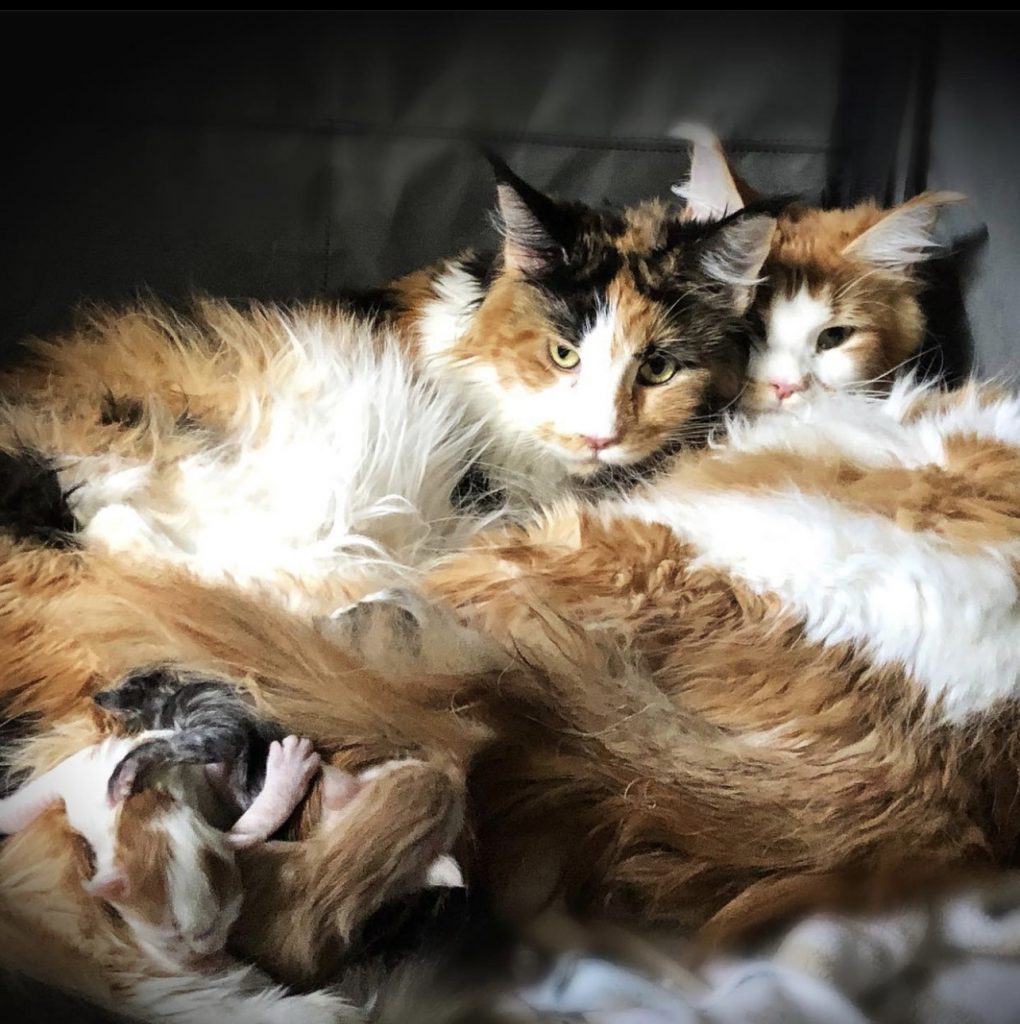
Queen Cages are Good for Multiple Litters
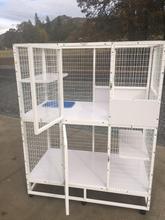
Queen Cages are another solution for raising multiple litters at once. They keep the kittens contained in a safe enclosure that is easy to clean. This option won’t be a crowd favorite for some, but don’t knock them until you’ve tried them.
In the episode, there’s some discussion about a breeder that I met that uses Queen cages. At first, it was surprising but now I have a better understanding of how nice and easy these could be used for kittens ages 0-5 weeks old, or until they’re litter trained.
" The Best Way to Do Things is Your Way"
Managing multiple litters of kittens in one space doesn’t have to be hard! You can get creative when setting up your kitten nursery and manage a few litters with ease. Explore the many options that are available. Do what’s best for you and for your cats. As long as they’re happy and stress-free then you’re making the right decision.
Cat Breeder Sensei was created to start a POSITIVE Movement in the Pedigree Cat Breeder Community! We want the next generation of breeders to have more knowledge, more insight, and be more helpful to their peers. Join us in celebrating the fascinating world of breeding Pedigree cats and spread the word that WE WILL NOT ACCEPT NEGATIVITY. <3
Share this podcast on your social media accounts and don’t forget to subscribe to the podcast

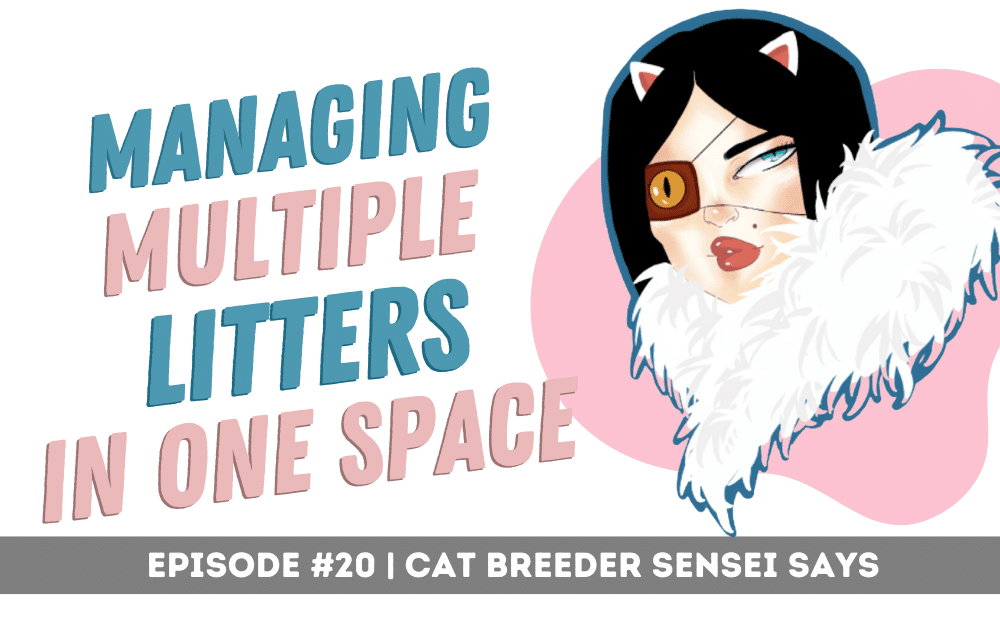
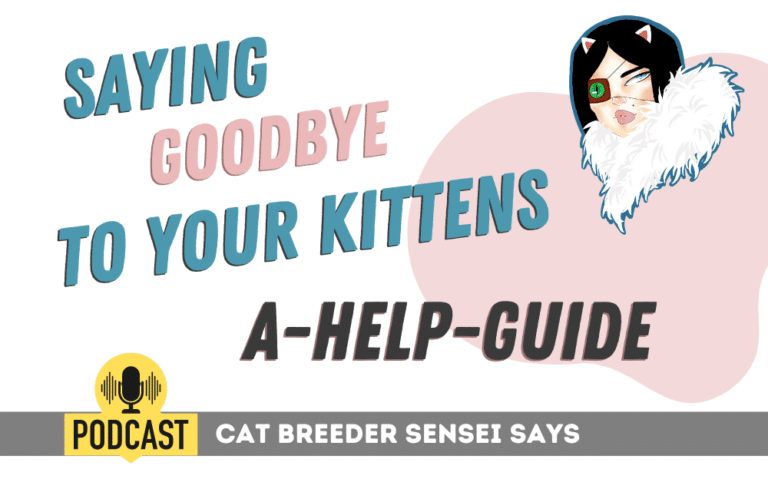
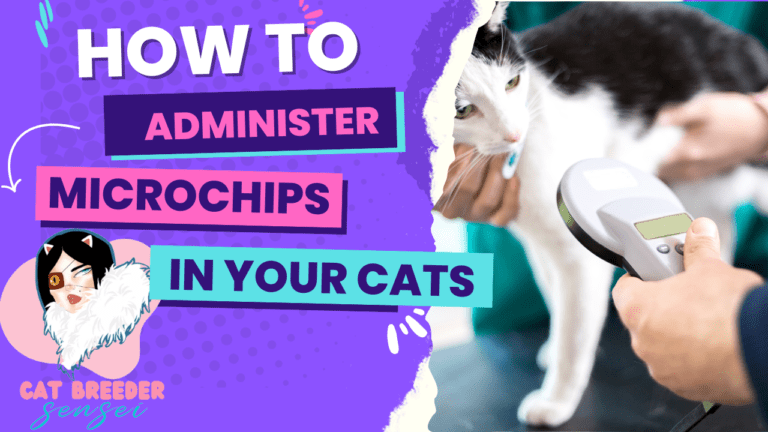
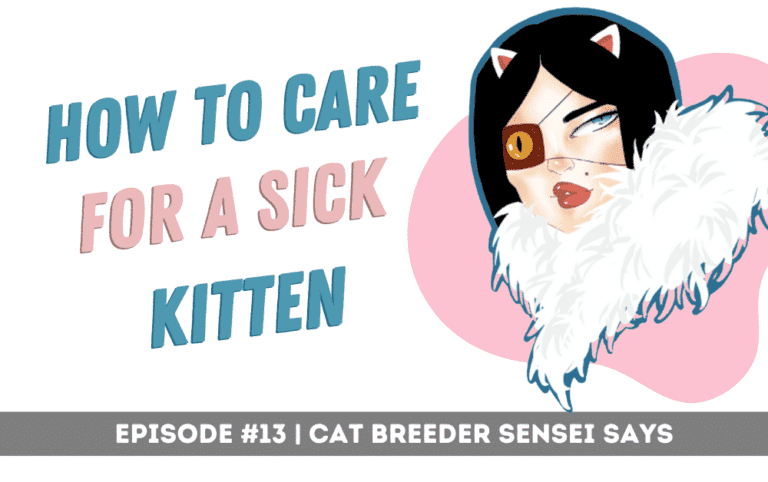

Hey there, thank you for sharing your podcasts! Are you able to post a picture of the accordion style wall that you used to creat separate spaces in your nursery?
You missed something not having a queen cages…they work great nirth to litter training…mine handled from birth ..lots of handling and attention and kitty playpens work great also…for next stages…and then out to play and be with for lots of attention and play when I’m present…when I’m not present or cleaning then in playpen…..